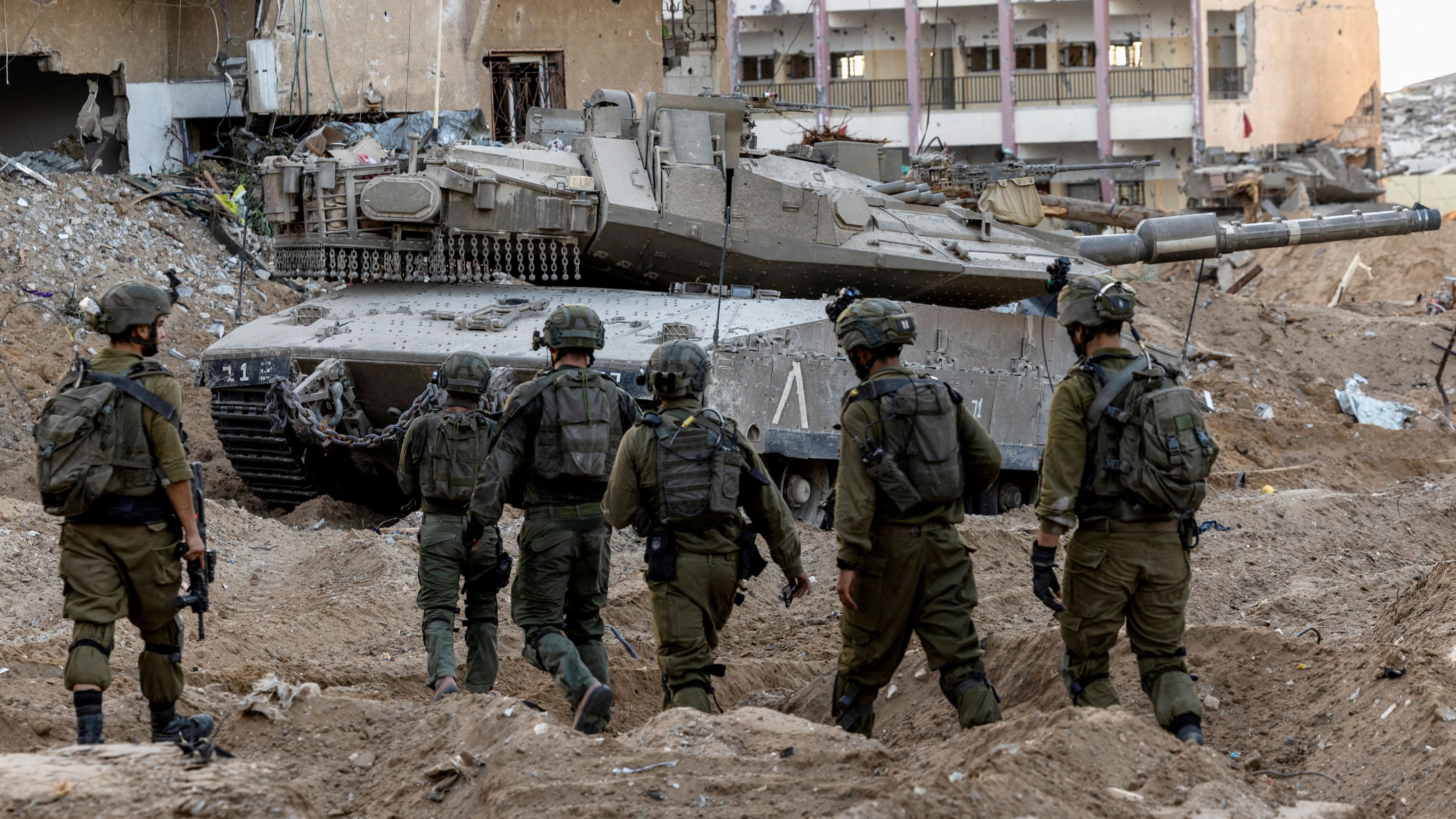03:11

WATCH: The current strategies for battle in Gaza are analysed on CGTN Europe
While air strikes continue to pound the Gaza Strip and the ground offensive targets Hamas's tunnel network beneath the besieged Palestinian enclave, Israel will have to prepare itself for a new brutal set of challenges as the war enters its next phase.
That's the warning by the Director of Policy and Research at The Soufan Group, a global intelligence and security consultancy, headquartered in New York.
Gaza City, the Hamas militant group's main stronghold in the territory, is encircled by Israeli forces. The military said troops have advanced to the heart of the densely-populated city, while Hamas says its fighters have inflicted heavy losses.
"What we're seeing right now is what I would call an encirclement strategy," Colin Clarke told CGTN Europe. "The Israelis are attempting to surround Gaza City, doing short kind of penetrating, ambush style incursions. In terms of counterinsurgency, it's a clear stage of what's typically 'clear, hold and build.'
"We're talking about fighting in what we call dense urban environments, which is among the most difficult types of combat that militaries have engaged in historically, whether it's Grozny or Chechnya as the Russians found out, or as the U.S. found out in Mosul in Iraq against the Islamic State.
"There are a number of challenges that go with this, including militants hiding in the rubble, using tunnels, improvised explosive devices, and also bringing with that more modern tech like drones. So combining old school with new school, it makes for a really difficult fight for the Israelis in the days and weeks ahead."

Israeli soldiers on the offensive in the northern Gaza Strip. /Ronen Zvulun/Reuters
Israeli soldiers on the offensive in the northern Gaza Strip. /Ronen Zvulun/Reuters
With the war entering its second month, UN officials and G7 nations stepped up appeals for a humanitarian pause in the hostilities to help alleviate the suffering in Gaza, where buildings have been flattened and basic supplies are running out.
Palestinian officials say more than 10,000 people have been killed, 40 percent of them children. Israel struck at Gaza in response to Hamas killing 1,400 people, mostly civilians, on October 7, according to Israeli tallies, as well as taking 240 hostages.
READ MORE
Hungary's changing climate fosters exotic fruit growth
Can eating chicken protect the environment?
London's Jewish and Muslim communities unite
The war has descended into the bloodiest episode in the generations-long Israel-Palestinian conflict and Clarke fears it may not have a swift solution.
"In my own research, we looked at 71 insurgencies from the end of World War Two to 2009," he said. "The median length was 10 years. Some lasted 30, some lasted a couple of months. It could be anywhere in that range.
"My sense, given the diplomatic pressure that's being applied and the U.S. is really investing a lot of resources in attempting to negotiate some kind of a humanitarian pause in the ceasefire, I'm hoping this one's down in weeks, but it could very well go much longer."

Subscribe to Storyboard: A weekly newsletter bringing you the best of CGTN every Friday